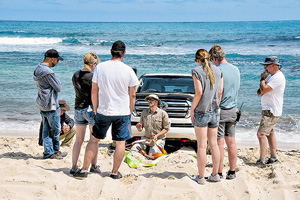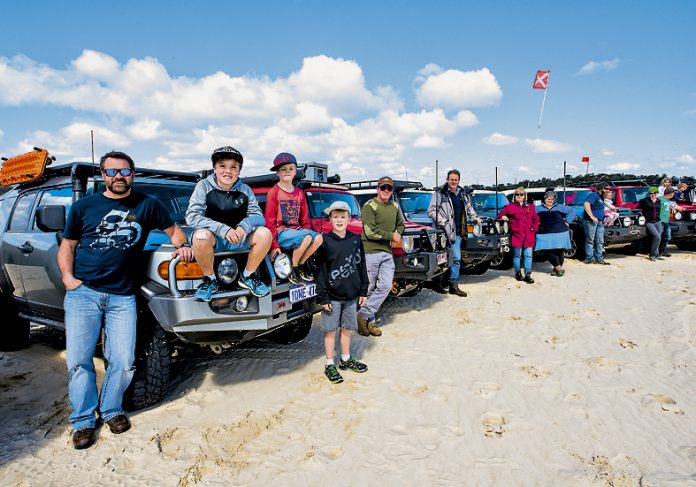You’ve seen the ad – a seemingly indestructible 4WDrive fording pristine streams or effortlessly conquering slippery slopes that would give a mountain goat vertigo! Dad has a relaxed smile behind the wheel; Mum and the kids happily gaze out the windows…
It is true – 4WDriving can be immensely rewarding. But don’t race into the dirt, it’s not as simple as advertising fairyland.
On your first test drive at the dealership you’ll notice you’re driving a taller, heavier vehicle; you have to brake a little sooner and take corners at a steadier pace. But if you’re thinking, “No problem, it’s easy to drive,” there’s the first gotcha!
Leave behind the controlled environment of smooth bitumen, formed edges, well-marked signs and painted white lines. Off-road surfaces switch from high traction well-graded gravel to loose ball bearings with sudden dips and drops or off camber corners that tweak your tail. You are responsible for reading the terrain and modifying speed, choosing high or low range and the right gear, adjusting tyre pressures, and knowing when to engage those marvelous electronic controls.
Because electronics cannot replace driving ability and experience. There are times when the wrong setting makes things worse.
Which leads to the one question I get asked all the time. “I’ve just bought a 4WDrive, what do I modify first?” My stock answer is, “Your driving! Learn how to use your 4×4 safely.” You don’t want your first foray onto the beach ending in a bogged vehicle with the tide coming in, a panic-stricken partner and a back seat full of frightened kids.
So, the best way to learn is give it a go, right? Especially if your mate owns a fourbie. Well, it depends. With no ill intent; bad habits and incorrect techniques are as easily taught as the right ones. To avoid “falling behind”, many novices will throw power and speed at an obstacle. The result is track damaging at best or leads to expensive repairs.
Join a 4WD club to make new friends with similar interests and for the safety of group travel. Many do informal training sessions but keep in mind that old style vehicles may require different techniques that do not apply to modern 4x4s.
It’s far cheaper to do a professional driving course than it is to repair a vehicle. Courses can be a general introduction, be specific to towing or focus on different terrain such as bush or beach. Don’t be fooled; sand can be one of the most difficult terrains to master given the huge variation in conditions from almost concrete surfaces as smooth as a carpark, to deep soft white powder that saps power from the strongest of engines.
Choose a company that focuses on recreational 4WDriving and learn how to set up your vehicle correctly for off-road driving. The relevance of all those extra bits underneath your 4×4 will be explained; as well as when to engage the buttons and dials specific to your 4WD. You’ll get unbiased tips on what recovery gear to buy and feedback on aftermarket accessories and modifications.
With the confidence you’ll gain from the course; your first solo trip won’t be nerve-wracking. Or if you go out with a group you won’t be slowing them down or giving them a reason to laugh at the newbie.
Training Companies:





























